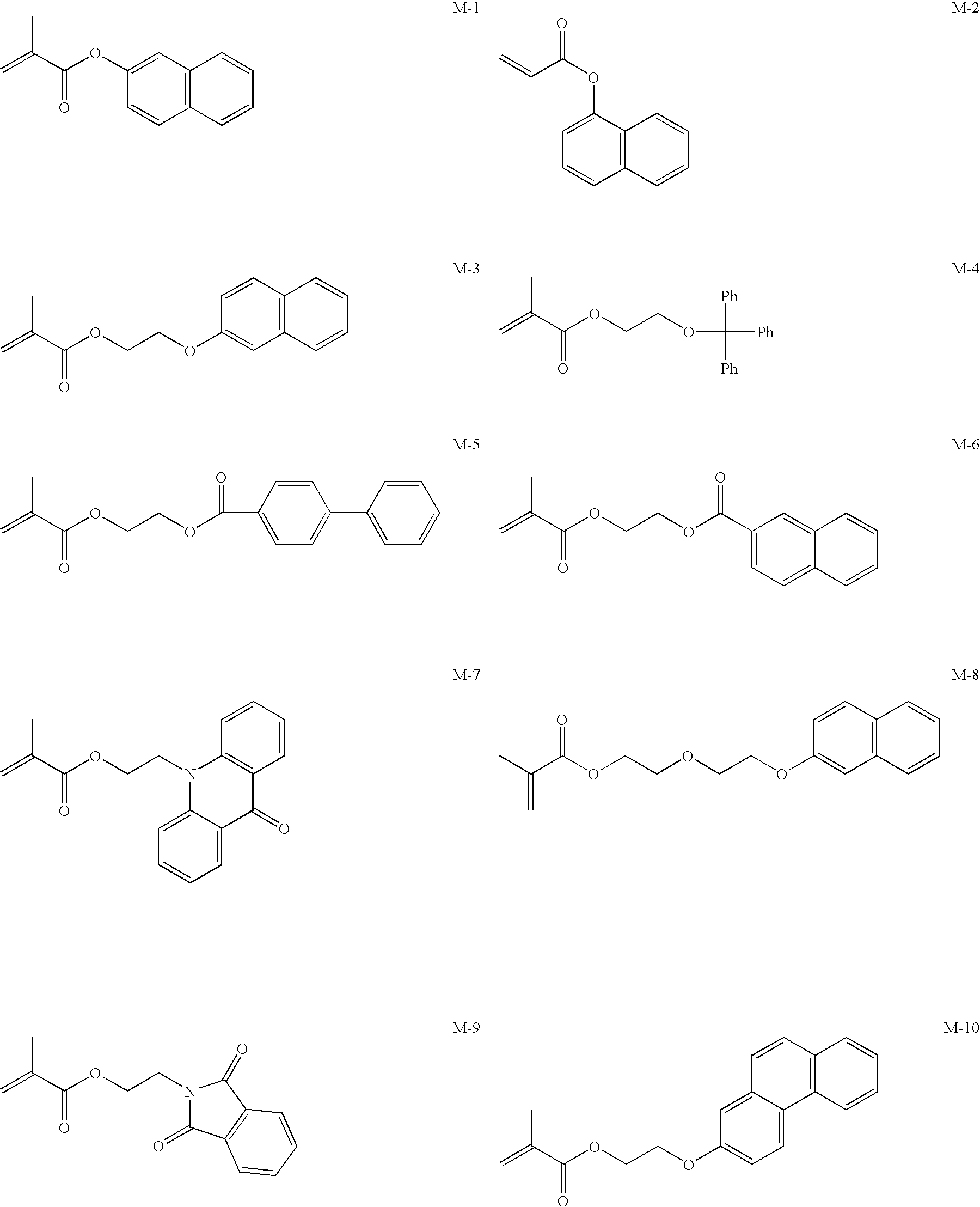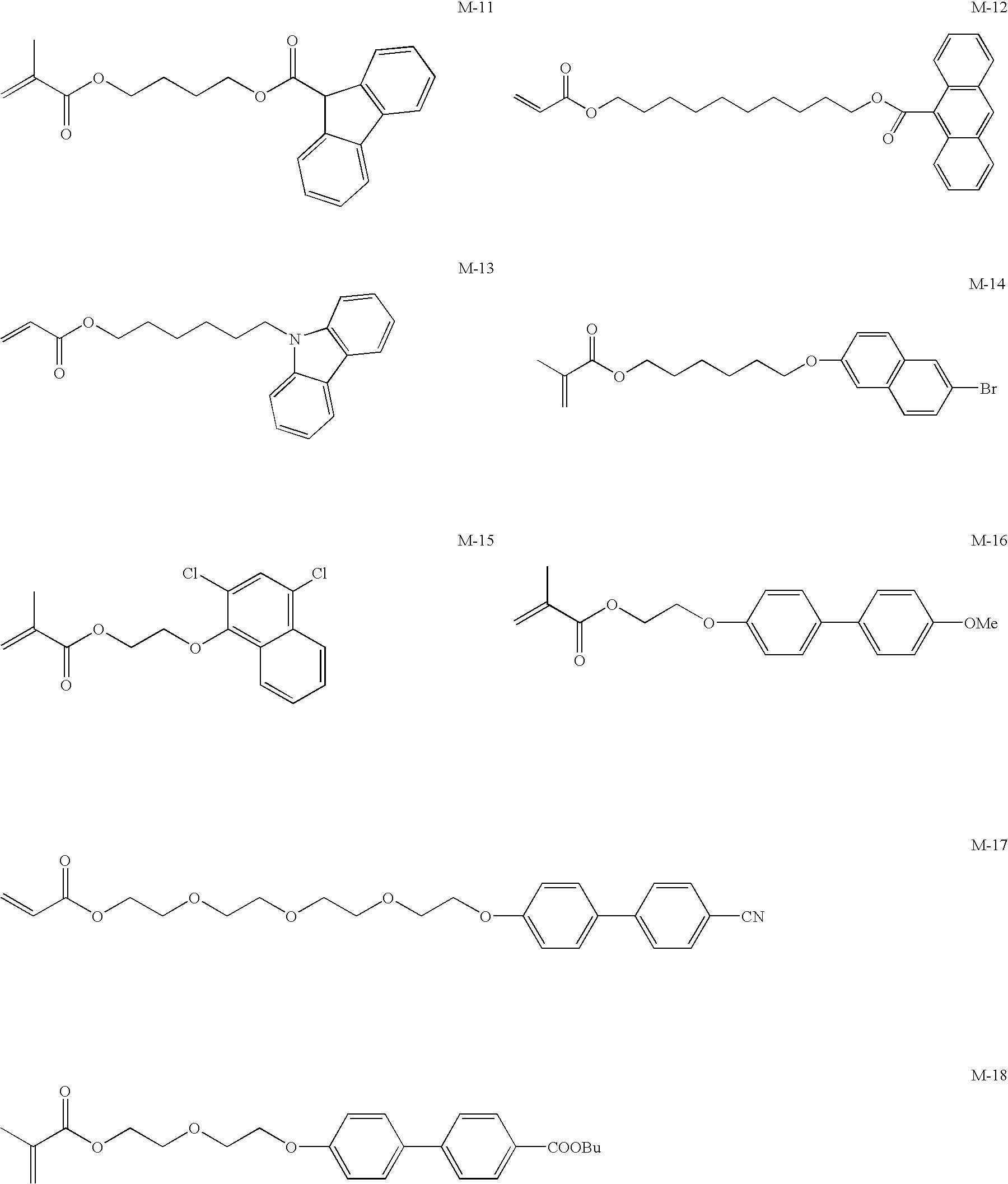Aqeous inkjet recording ink
a technology of inkjet recording and water, which is applied in the direction of inks, coatings, pharmaceutical delivery mechanisms, etc., can solve the problems of unable to meet the ejection stability and rubfastness requirements of pigment inks, and achieve the effect of satisfying the ejection stability and rubfastness requirements
- Summary
- Abstract
- Description
- Claims
- Application Information
AI Technical Summary
Benefits of technology
Problems solved by technology
Method used
Image
Examples
synthetic example 1
[0207]A carboxylic acid salt type emulsifier (LATEMULASK (trade name); manufactured by Kao Corporation) (19.8 g), 6 g of an aqueous solution of sodium hydroxide (5 mol / l), and 0.3 g of 2,2′-azobis(2-amidinopropane)dihydrochloride were uniformly dissolved in 120 g of water. The solution was heated to 70° C., and a monomer mixture of 25.9 g of styrene, 26.3 g of butylacrylate and 5.1 g of acrylic acid was added to the solution over two hours in a stream of nitrogen, and thereafter, the resultant mixture was heated at 70° C. for two hours and at 80° C. for three hours. After the mixture was cooled to room temperature, an aqueous solution of sodium hydroxide (1 mol / l) was added to the mixture with stirring so as to have a pH value of about 9, so that a latex of PL-01 was obtained. The volume average particle diameter of the thus obtained latex was 115 nm. The solid content of the latex dispersion was 33% by mass.
synthetic example 2
[0208]Latex PL-02 was obtained in a manner similar to the synthetic example 1 except that a monomer mixture of 35.4 g of styrene, 21.2 g of butyl acrylate and 4.4 g of acrylic acid was used. The volume average particle diameter of the thus obtained latex was 125 nm. The solid content of the latex dispersion was 32% by mass.
example 1
[0209](Dispersion of Resin Particles containing Pigment)
[0210]Pigment blue 15:3 (Phthalocyanine Blue A220 (trade name) manufactured by Dainichiseika Color & Chemicals Mfg. Co., Ltd.) (10 parts by mass), 5 parts by mass of P-1 resin dispersant recited in Table 1, 42 parts by mass of methyl ethylketone, 5.5 parts by mass of an aqueous solution of NaOH (1 N), and 87.2 parts by mass of ion exchange water were mixed, and the mixture was dispersed with the use of zirconia beads with a diameter of 0.1 mmΦ by a bead mill for 2 to 6 hours. Methyl ethylketone was removed from the obtained dispersion at 55° C. under reduced pressure, and a part of water was removed to obtain a dispersion of resin particles containing pigment with a pigment concentration of 10.2% by mass.
[0211](Preparation of Ink Composition)
[0212]Next, using the thus obtained dispersion of resin particles containing pigment, an ink composition with the following composition was prepared.
the above dispersion of resin particles3...
PUM
| Property | Measurement | Unit |
|---|---|---|
| Percent by mass | aaaaa | aaaaa |
| Percent by mass | aaaaa | aaaaa |
| Mass | aaaaa | aaaaa |
Abstract
Description
Claims
Application Information
 Login to View More
Login to View More - R&D
- Intellectual Property
- Life Sciences
- Materials
- Tech Scout
- Unparalleled Data Quality
- Higher Quality Content
- 60% Fewer Hallucinations
Browse by: Latest US Patents, China's latest patents, Technical Efficacy Thesaurus, Application Domain, Technology Topic, Popular Technical Reports.
© 2025 PatSnap. All rights reserved.Legal|Privacy policy|Modern Slavery Act Transparency Statement|Sitemap|About US| Contact US: help@patsnap.com



